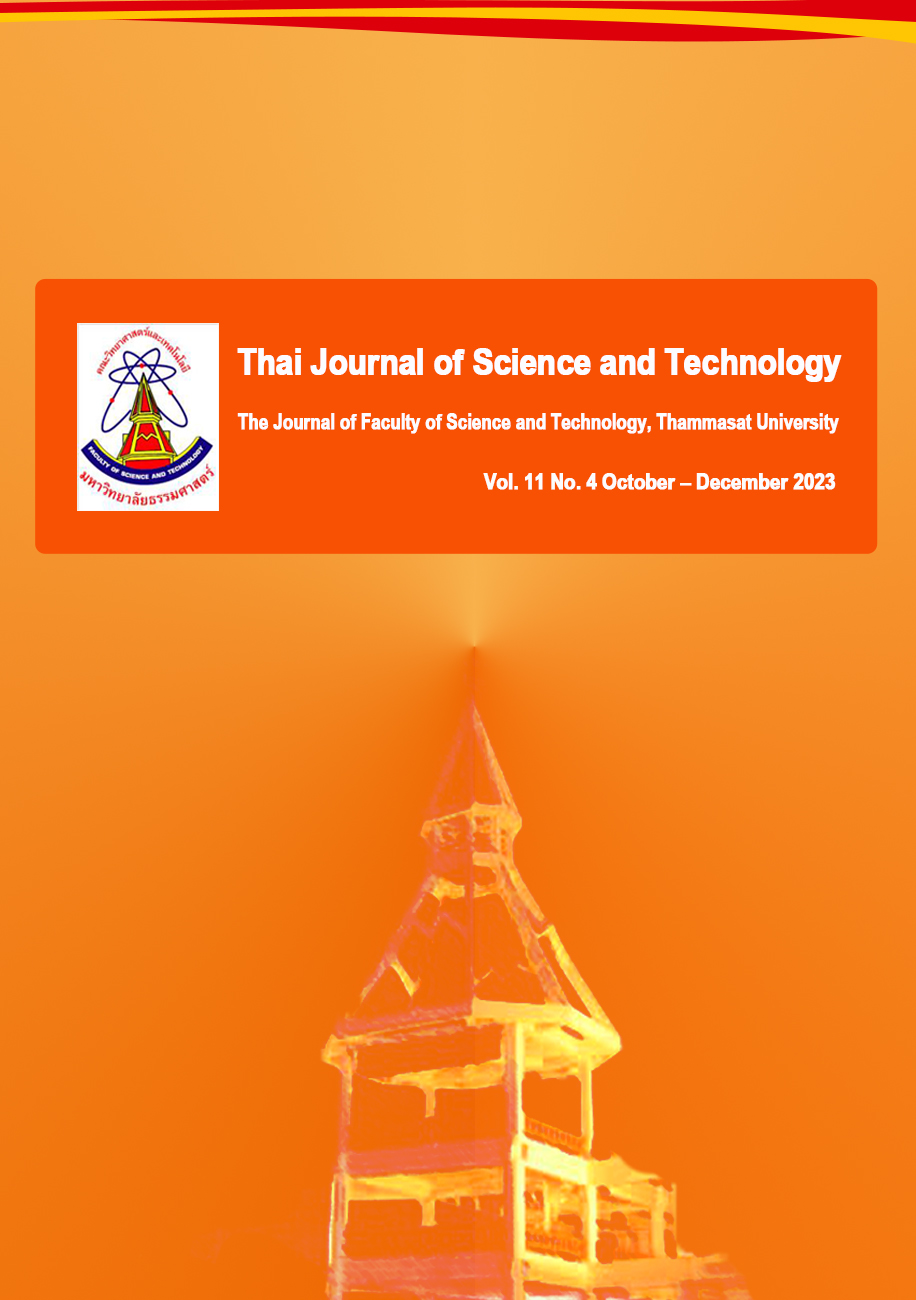Effects of Colchicine on Growth and Morphological Characteristics of Genus Ficus
Main Article Content
Abstract
The objective of the study on the effects of colchicine in Ficus genus. was to determine the optimal colchicine concentration for the growth of Ficus genus. and mutation induction. The experiment used randomized complete block design (RCBD) at the Thailand Institute of Scientific and Technological Research (TISTR) consisting of the concentration level of colchicine, 6 treatments were 0, 0.5, 1.0, 1.5, 2.0, and 2.5 g/l, by dropping colchicine on the tip of 2 types of Ficusses, namely Ficus microcarpa L.f. ‘Sai TISTR 1’ and Ficus microcarpa L.f. The growth was recorded for 2 months. It found that colchicine concentrations at 1.5 g/l had the greatest influence on the growth of Ficus microcarpa L.f. ‘Sai TISTR 1’ in terms of canopy width, plant height, number of shoots, leaf length, and leaf width with an average of 26.46 cm., 42.00 cm., 17.26 tips, 7.44 cm., 3.30 cm., respectively. The influence of colchicine on the growth of Ficus microcarpa L.f. found that the control group, which did not drop colchicine, had the greatest canopy width with an average of 17.06 cm. and colchicine concentrations at 0.5 g/l had the greatest influence on the stem of Ficus microcarpa L.f. with an average of 10.90 cm. The concentration of colchicine at 2.5 g/l resulted in the highest number of shoots with an average of 15.00 shoots, while the length and width of the leaves were not statistically different. Moreover, colchicine used at all concentrations did not affect the transformation characteristics of Ficus microcarpa L.f. ‘Sai TISTR 1’ and Ficus microcarpa L.f.
Article Details

This work is licensed under a Creative Commons Attribution-NonCommercial-NoDerivatives 4.0 International License.
บทความที่ได้รับการตีพิมพ์เป็นลิขสิทธิ์ของคณะวิทยาศาสตร์และเทคโนโลยี มหาวิทยาลัยธรรมศาสตร์ ข้อความที่ปรากฏในแต่ละเรื่องของวารสารเล่มนี้เป็นเพียงความเห็นส่วนตัวของผู้เขียน ไม่มีความเกี่ยวข้องกับคณะวิทยาศาสตร์และเทคโนโลยี หรือคณาจารย์ท่านอื่นในมหาวิทยาลัยธรรมศาสตร์ ผู้เขียนต้องยืนยันว่าความรับผิดชอบต่อทุกข้อความที่นำเสนอไว้ในบทความของตน หากมีข้อผิดพลาดหรือความไม่ถูกต้องใด ๆ
References
Wimon, K. (1984). The use of colcecin on plants. Kasetsart News, 29(3), 22-34.
Chakkrit, P., Supranee, B., Yupin, C., Wassana, W., & Chukiat, P. (2002). Plant breeding by induced mutation with colchicine in sweet corn, Chinese cabbage, kale and shallot. Location: Department of Biology Faculty of Science. Mahasarakham University.
Thakonwan, S. MPP. Induction of mutation using colchicine. Retrieved from Institute of Science and Technology Research. doi:stri.cmu.ac.th/article_detail.php?id=36.
Nopporn, S. (2000). Plant breeding techniques. Location: Department of Agronomy, Faculty of Agriculture, Kasetsart University. Bangkok 261 p.m.
Siranuch, L. (1997). Plant mutation. Location: Kasetsart University Press, Bangkok.
Stadler J, R L, Phillips., & M, Leonard. (1989). Mitotic blocking agents for suspension cultures of maize “Black Mexican Sweet” cell lines. Genome, 32, 475-478.


